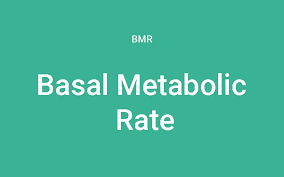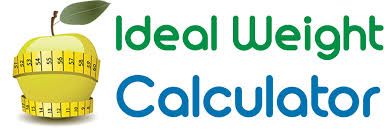In today’s fast-paced medical environment, healthcare professionals require efficient and accurate tools to deliver personalized care. A body surface area calculator or body surface calculator are essential resources designed to streamline the process of estimating a patient’s Body Surface Area (BSA) based on their height and weight. These user-friendly BSA calculator help healthcare providers make informed decisions regarding drug dosages, organ function assessments, fluid requirements, and other medical applications.
Body Surface Calculator
These are Body Surface Area by different formulas which are used globally to measure BSA.
| Formula | m2 | ft2 | in2 |
|---|
[ez-toc]
What is Body Surface area?
Body Surface Area (BSA) is an essential parameter in the medical field that helps healthcare professionals make informed decisions about patient care. In this comprehensive guide, we'll delve into the concept of BSA ( Body Surface Area), its significance in medicine, and the different methods used to calculate it. Learn how BSA plays a crucial role in determining drug dosages, assessing organ function, and evaluating various medical conditions.
What is BSA (Body Surface Area)?
Body Surface Area (BSA) refers to the total external surface area of a human body. It's typically expressed in square meters (m²) and varies based on factors such as age, gender, height, and weight. BSA serves as a crucial parameter in medical practice and is used for various purposes, including determining drug dosages, calculating fluid requirements, and assessing organ function.
Significance of BSA in Medicine:
Understanding the importance of BSA in the medical field can help illuminate its widespread applications:
Drug dosages: BSA is used to calculate drug dosages for chemotherapy, immunosuppressive agents, and other medications. It helps ensure that patients receive the appropriate dosage based on their unique characteristics, minimizing the risk of underdosing or overdosing.
Fluid requirements: BSA plays a role in determining fluid requirements for patients, especially in burn victims, where fluid replacement is crucial for proper treatment and recovery.
Assessing organ function: BSA is utilized in evaluating the function of various organs, such as the kidneys and heart. It helps in interpreting test results more accurately by accounting for individual differences.
Nutritional assessments: BSA is also employed in assessing patients' nutritional status and energy requirements, ensuring that they receive the necessary nutrients for optimal health and recovery.
Methods of Calculating Body Surface area:
Various methods are used to calculate BSA, each with its unique formula. Some of the most commonly used methods include:
- Du Bois and Du Bois Formula: BSA (m²) = 0.007184 × Height (cm)^0.725 × Weight (kg)^0.425
- Mosteller Formula: BSA (m²) = √([Height (cm) × Weight (kg)] / 3600)
- Haycock Formula: BSA (m²) = 0.024265 × Height (cm)^0.3964 × Weight (kg)^0.5378
- Gehan and George Formula: BSA (m²) = 0.0235 × Height (cm)^0.42246 × Weight (kg)^0.51456
These formulas are used to estimate BSA, and the choice of method often depends on the specific situation or medical professional's preference.
BSA (Body Surface Area) is a vital parameter in medicine that helps healthcare professionals make informed decisions regarding patient care. By understanding the significance of BSA and the various methods used to calculate it, you can appreciate its importance in determining drug dosages, assessing organ function, and evaluating medical conditions. As medical knowledge and technology continue to advance, BSA will remain a key component in providing personalized and effective patient care.
Most Popular BSA (Body Surface Area) formulas and Equation
Body Surface Area (BSA) calculations are vital in medicine for determining drug dosages, assessing organ function, and evaluating various medical conditions. With several BSA formulas and equations available, it's essential to understand the most popular ones and their applications. In this in-depth guide, we'll explore the top BSA formulas, their equations, and how to use them to calculate BSA for personalized patient care.
Most Popular BSA Formulas and Equations:
Here's a closer look at the most widely used BSA formulas and their respective equations:
- Du Bois and Du Bois Formula: Developed by Drs. Du Bois and Du Bois in 1916, this formula is one of the earliest and most well-known methods for calculating BSA. The equation is as follows:
BSA (m²) = 0.007184 × Height (cm)^0.725 × Weight (kg)^0.425
- Mosteller Formula: Introduced by Dr. Robert Mosteller in 1987, this formula simplifies the calculation of BSA and is commonly used in clinical practice. The equation for this method is:
BSA (m²) = √([Height (cm) × Weight (kg)] / 3600)
- Haycock Formula: Developed by Haycock et al. in 1978, this formula is based on data from infants, children, and adults, making it a versatile option for various age groups. The equation for this method is:
BSA (m²) = 0.024265 × Height (cm)^0.3964 × Weight (kg)^0.5378
- Gehan and George Formula: Proposed by Gehan and George in 1970, this formula is derived from studies involving cancer patients. The equation for this method is:
BSA (m²) = 0.0235 × Height (cm)^0.42246 × Weight (kg)^0.51456
Using BSA Formulas for Patient Care - How to Calculate BSA
To calculate BSA using any of the above formulas, you'll need the patient's height in centimeters and weight in kilograms. Once you've obtained these measurements, simply plug the values into the chosen formula to estimate the patient's BSA. Keep in mind that while these formulas provide an approximation, individual variations may still exist.
Example :-
let's recalculate the body surface area using the Mosteller formula.
- Height in centimeters (H) = 175 cm
- Weight in kilograms (W) = 70 kg
Now, let's follow the Mosteller formula step by step:
- Multiply height (H) by weight (W): 175 cm × 70 kg = 12,250
- Divide the result by 3600: 12,250 / 3600 = 3.40
- Find the square root of the result: √3.40 ≈ 1.85
If you are 175 cm tall and weigh 70 kg, the approximate calculation of your body surface area using the Mosteller formula is approximately 1.85 square meters.
The choice of BSA formula often depends on the healthcare professional's preference, the specific medical situation, and the patient population being treated. Each formula has its unique strengths and limitations, but all serve the purpose of personalizing patient care, ensuring accurate drug dosages, and facilitating better medical assessments.
Understanding the most popular BSA (Body Surface Area) formulas and equations is crucial for healthcare professionals and anyone involved in patient care. By learning how to calculate BSA using these methods, you can ensure personalized and effective treatment for patients of all ages. As medicine continues to advance, these formulas will remain integral tools for providing customized care that accounts for individual differences in body size and composition.
Body surface area (BSA) chart
We'll explore the concept of the BSA chart, its purpose, and how it can be used to make informed decisions in patient care.
The Purpose of BSA Charts:
BSA charts provide an easy and convenient way for healthcare professionals to estimate a patient's Body Surface Area without performing complex calculations. They typically display BSA values for various combinations of height and weight, allowing
medical practitioners to quickly determine BSA based on a patient's unique measurements. By using a BSA chart, healthcare providers can save time and ensure accurate assessments for personalized care.
Using BSA Charts in Medicine and Healthcare:
Here are some key applications of BSA charts in medical practice:
Drug dosages: BSA charts can be used to determine the appropriate drug dosages for various medications, including chemotherapy and immunosuppressive drugs. By consulting a BSA chart, healthcare professionals can quickly estimate the patient's BSA and adjust drug dosages accordingly, minimizing the risk of underdosing or overdosing.
Fluid requirements: In cases of severe burns or other conditions requiring significant fluid replacement, BSA charts can help healthcare providers quickly estimate the patient's BSA and calculate fluid requirements. This ensures proper treatment and recovery by delivering the necessary amount of fluids based on the patient's unique body size and composition.
Organ function assessments: BSA charts can be employed in evaluating organ function, such as kidney and heart function. By adjusting organ function measurements based on BSA values from the chart, healthcare professionals can provide a more accurate representation of an individual's organ function, accounting for body size differences.
Nutritional assessments: BSA charts can also aid in assessing a patient's nutritional status and energy requirements. By determining the patient's BSA, healthcare providers can develop personalized nutritional plans that ensure optimal health and recovery.
Limitations and Considerations:
While BSA charts offer a convenient method for estimating Body Surface Area, it's essential to remember that they provide approximations and may not account for all individual variations. Factors such as age, gender, and underlying medical conditions should also be considered when making medical decisions. Furthermore, BSA charts are best used in conjunction with other assessment tools and clinical judgment to provide the most accurate and personalized care.
Body Surface Area (BSA) charts serve as a valuable tool in medicine and healthcare, allowing healthcare professionals to quickly estimate a patient's BSA and make informed decisions regarding treatment and medical assessments. By understanding the purpose and applications of BSA charts, medical practitioners can provide personalized and effective care for patients of all ages and body types. As medicine continues to advance, BSA charts will remain an essential resource for ensuring accurate and customized patient care.
Body Surface Area Calculator
Body Surface Area (BSA) is a vital measurement in medicine, playing a significant role in determining drug dosages, assessing organ function, and evaluating various medical conditions. To simplify these calculations, healthcare professionals often rely on tools such as a "body surface area calculator" or a "body surface calculator". In this comprehensive guide, we'll discuss the advantages of using these calculators and how they contribute to personalized patient care and accurate medical assessments.
Benefits of Using a Body Surface Area Calculator Or Body Surface Calculator:
Here are some key advantages of using a body surface area calculator / body surface calculator in medical practice:
Time-saving and convenient: These calculators allow healthcare professionals to quickly estimate a patient's BSA based on their height and weight. By using a body surface area calculator or a body surface calculator, medical practitioners can save time and focus on other aspects of patient care.
Accurate calculations: Body surface area calculator or body surface calculator use established formulas to calculate BSA, ensuring accurate estimations for personalized care. These calculators help reduce the risk of errors in manual calculations, leading to more precise treatment plans.
Wide applicability: A body surface area calculator / body surface calculator can be used across various medical disciplines, including drug dosages, fluid requirements, organ function assessments, nutritional assessments, and radiation therapy. These calculators serve as valuable tools to help healthcare providers make informed decisions based on a patient's unique body size and composition.
Easy access and user-friendly: Many body surface area calculators or body surface calculators are available online or as mobile applications, making them easily accessible to healthcare professionals. These tools are generally user-friendly and can be used with minimal training or technical knowledge.
Using a Body Surface Area Calculator or Body Surface Calculator in Medicine:
To use a body surface area calculator or a body surface calculator, simply input the patient's height and weight into the calculator. The tool will then compute the patient's BSA based on a selected formula, such as Du Bois and Du Bois, Mosteller, Haycock, or Gehan and George. Once the BSA has been calculated, healthcare providers can utilize this information to make informed decisions about drug dosages, fluid requirements, organ function assessments, and other medical applications.
FAQ on BSA (Body Surface Area)
What is BSA (Body Surface Area)?
Body Surface Area (BSA) is a measurement used to estimate the total surface area of the human body. It's often used in medicine to determine drug dosages, assess nutritional needs, and evaluate a patient's metabolic rate.
Why is calculating BSA important in healthcare?
Calculating BSA is important because it helps healthcare professionals determine appropriate drug dosages, radiation therapy planning, and nutritional requirements. It aids in delivering more precise and personalized medical care.
How is BSA calculated?
BSA can be calculated using various formulas, such as the Mosteller formula or the DuBois and DuBois formula. These formulas typically require the measurement of height and weight.
What is the Mosteller formula for calculating BSA?
The Mosteller formula is one of the commonly used methods for calculating BSA. It involves multiplying the square root of the product of a person's height (in centimeters) and weight (in kilograms) by a constant factor (0.20247).
Can I calculate BSA manually without a calculator?
Yes, you can calculate BSA manually using a pen and paper or a Body Surface calculator. You'll need to use the appropriate formula and input your height and weight values.
What are the units of BSA typically expressed in?
BSA is typically expressed in square meters (m²). However, it can also be expressed in square centimeters (cm²) or other units depending on the context.
Are there different formulas for calculating BSA?
Yes, besides the Mosteller formula, there are other formulas like the DuBois and DuBois formula, the Haycock formula, and the Gehan and George formula, among others. Different formulas may provide slightly different results.
Is BSA used only in healthcare?
While BSA is primarily used in healthcare for medical purposes, it can also be applied in other fields like nutrition and exercise science to assess metabolic rates and nutritional requirements.
Is BSA a reliable indicator of a person's health or fitness level?
BSA is not typically used as a direct indicator of health or fitness level. It is primarily a tool for medical calculations and treatment planning.
Can BSA be used to determine body composition or body fat percentage?
No, BSA is not used to determine body composition or body fat percentage. It focuses on the surface area of the body rather than its internal composition.
Are Body Surface Area calculator available online?
Yes, there are numerous Body Surface Area Calculator available online that use various formulas to estimate BSA based on height and weight input. These calculators can provide quick and convenient results for medical professionals and individuals seeking to calculate their BSA.
body surface area calculator / body surface calculator are essential tools in medicine, simplifying BSA calculations and ensuring accurate medical assessments. By incorporating these calculators into their practice, healthcare professionals can provide personalized and effective care for patients of all ages and body types.





